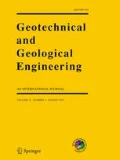Abstract
Life cycle analysis (LCA) methodology was used to perform a quantitative, comparative analysis and rating of the construction and operation of a wind energy plant. For this case study, the Glacier Hills Wind Park (90 1.8-MW turbines in south-central Wisconsin) was evaluated. Significant environmental and economic benefits are often advertised with the installation of new wind energy facilities, although independent and comprehensive LCA and sustainable energy science are typically not implemented. Hence, a quantitative demonstration with LCA methodology of the life cycle emissions and environmental impact, from construction through operations, can greatly assist in highlighting significant areas of energy consumption and emissions during manufacturing, transportation, and construction of a wind farm. Results portray the amount of greenhouse gas emissions and energy consumption/generation over the life cycle of the wind park. Transportation of large components from overseas led to the consumption of considerable quantities of fossil fuel, responsible for up to 22 % of the total greenhouse gas emissions due to transportation. The energy payback ratio (25.5), energy payback time (12.3 months) and the total grams of equivalent CO2(eq) per kWh of energy (16.9) produced were calculated over the life time of this onshore wind farm.




Similar content being viewed by others
References
Australian Department of Climate Change and Energy Efficiency (2010) National Greenhouse Accounts (NGA) Factors
Dvorak P (2011) Glacier Hills Wind Farm starts with 90 turbines. Wind Power Engineering and Development
Farnel Capital Inc (2012) Freight-Rates. http://www.searates.com (Accessed Apr. 15, 2012)
Frischknecht R, Jungbluth N (2007) Overview and Methodology of Ecoinvent 2.0 Database. Ecoinvent Centre
Gagnon L (2005) Power generation options: energy payback ratio. Hydro-Québec Factsheet
Gagnon L, Belanger C, Uchiyama Y (2002) Life-cycle assessment of electricity generation options: the status of research in year 2001. Energy Policy 30:1267–1278
Granovskii M, Dincer I, Rosen MA (2007) Greenhouse gas emissions reduction by use of wind and solar energies for hydrogen and electricity production: economic factors. Int J Hydrogen Energy 32:927–931
Hofstrand D (2007) Energy measurements and conversions. Iowa State University Extension and Outreach
Horvath A (2004) A life-cycle analysis model and decision-support tool for selecting recycled versus virgin materials for highway applications. University of California at Berkeley
Intergovernmental Panel on Climate Change (IPCC) (2007) The AR4 Synthesis Report
Jokela A, Innis S (2010) Vestas bolsters Colorado economy. Vestas-American Wind Technology, Inc.
Lang PJ (2012) Sensitivity of shallow wind turbine foundation design and soil response to geotechnical variance with construction cost implications. University of Wisconsin Madison, MS Thesis Report
McChulloch M, Raynolds M, Laurie M (2000) Life-cycle value assessment of a wind turbine. Pembina Institute, Alberta
Raadal HL, Gagnon L, Modahl IS, Hanssen OJ (2011) Life cycle greenhouse gas (GHG) emissions from the generation of wind and hydro power. Renew Sustain Energy Rev 15:3417–3422
RENEW Wisconsin (2011) Wisconsin Wind Farms: Glacier Hills Wind Energy Center
Ruether JA, Ramezan A, Balash PC (2004) Greenhouse gas emissions from coal gasification power generation systems. J Infrastruct Sys 10(3):111–119
Sailor DJ, Smith M, Hart M (2008) Climate change implications for wind power resources in the Northwest United States. Renewable Energy 33:2393–2406
Schleisner L (2000) Life cycle assessment of a wind farm and related externalities. Renew Energy (Elsevier) 20(3):279–288
Spath PL, Mann MR, Kerr DR (1999) Life cycle assessment of coal-fired power production. National Renewable Energy Laboratory
US Department of Energy (2008) Transportation Energy Data Book
US Department of Energy and National Renewable Energy Laboratory (2012) Wisconsin 80-Meter Wind Map and Wind Resource Potential
van Wijk AJM, Turkenburg WC (1992) Costs avoided by the use of wind energy in the Netherlands. Electr Power Sys Res 23:201–216
Vestas (2009) V90-1.8 MW Maximum output at medium-wind sites in North America
Vestas (2010) General Specification: V90–1.8 MW 60 Hz, VCSS
WE Energies (2008) Glacier Hills Wind Park. Application for certificate of public convenience and necessity, Madison
WE Energies (2009) Glacier Hills Wind Park Project final environmental impact statement. Public service commission of Wisconsin
Weea J-H, Choi KS (2010) CO2 emission and avoidance in mobile applications. Renew Sustain Energy Rev 14:814–820
Yue C-D, Liu C-M, Liou EML (2001) A transition toward a sustainable energy future: feasibility assessment and development strategies of wind power in Taiwan. Energy Policy 29:951–963
Author information
Authors and Affiliations
Corresponding author
Rights and permissions
About this article
Cite this article
Rajaei, M., Tinjum, J.M. Life Cycle Assessment of Energy Balance and Emissions of a Wind Energy Plant. Geotech Geol Eng 31, 1663–1670 (2013). https://doi.org/10.1007/s10706-013-9637-3
Received:
Accepted:
Published:
Issue Date:
DOI: https://doi.org/10.1007/s10706-013-9637-3




